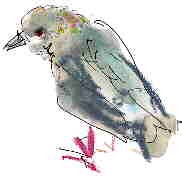Norman
Allan | ||||
Fingernails: growth of...
| ||
The
nail grows from the "nail matrix".
The nail matrix is the "moon" (or lunula). Further along the nail, the
matrix ends and we come to the "nail bed" "The
nail can be considered to resemble a flattened, cubist-like, hair follicle."
(Barnhill: Textbook of Dermotopatholgy) "The
nail plate moves distally entirely by growth pressure arising from the matrix.
The nail bed epithelium plays a passive roll in this movement. Nails grow about
0.1 mm per day on average with growth faster in the summer than "Nails grow at an average rate of 0.1mm a day (1 cm every 100 days) Fingernails require 4 to 6 months to regrow completely. Toenails require 12 to 18 months. Actual growth rate is dependent upon age, season, exercise level, and hereditary factors." (wikipedia) | ||
While we are advised to look at nails more as modified hair, than as modified skin... none-the-less
Let's look first at the growth of skin.
I want to explain how this one protein, ketatin, can be many things - skin, nails, horn, hoofs - but I haven't yet found good sources, so instead I'm going to tell you how another structural protein, collagin, can be tendon or cartilage or bone. Click here to read about these various arrangements of collagin.. | ||
 |